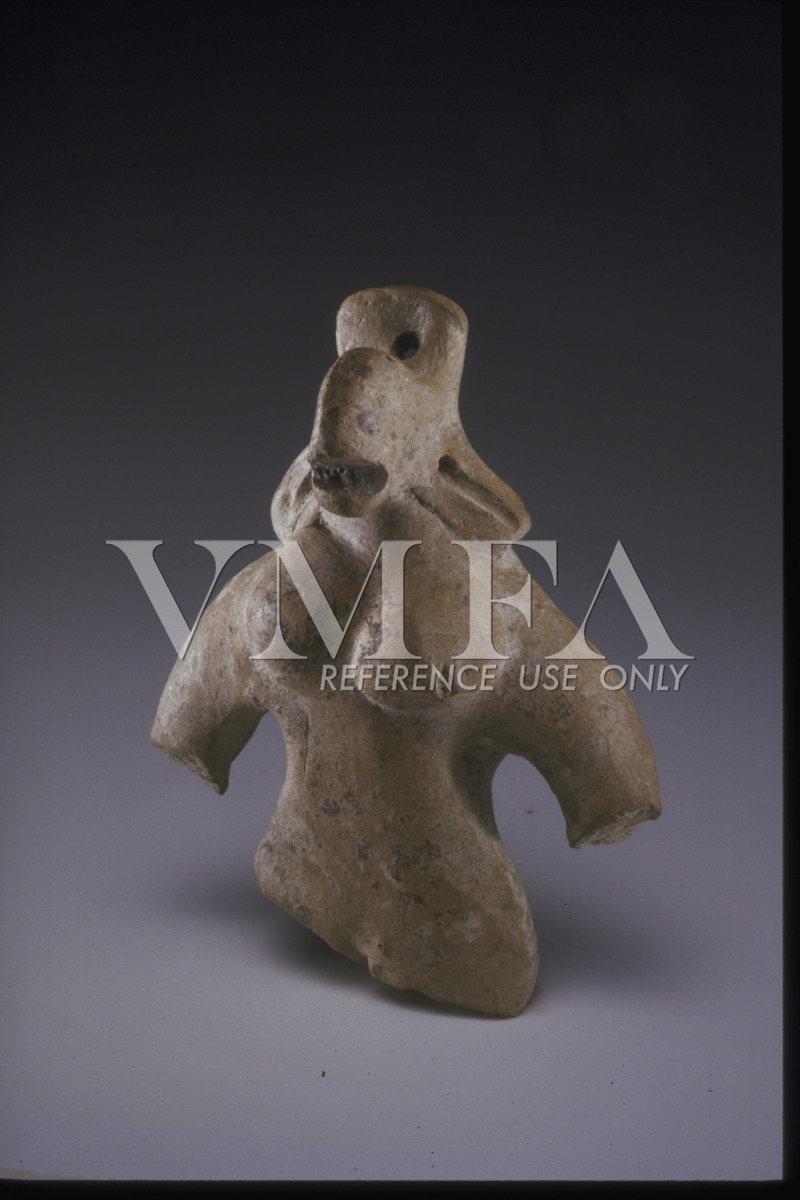
Female Figure (Primary Title)
Unknown (Artist)
Hand-molded clay figurines are among the most common works of art produced in ancient India. Many of these figurines represent females, sometimes with a bird or animal head. While their exact function is not known, it is such terra-cottas were most likely auspicious (lucky) objects associated with abundance and fertility. Though missing its legs and portions of its arms, this figurine combines a woman's body with a goat-like head. The earlobes are elongated, perhaps stretched from the weight of heavy earrings, and a hole in the headdress may have allowed the figurine to hang from a cord.
Protohistoric to Kushan periods
Semi-illegible writing on reverse, bottom edge of proper right thigh appears to be "kafu/r.19165". "V.M.F.A./Richmond" written on adhesive sticker on bottom of mount.
Gift of Mr. and Mrs. Edward W. M. Bryant
Image released via Creative Commons CC-BY-NC
Some object records are not complete and do not reflect VMFA's full and current knowledge. VMFA makes routine updates as records are reviewed and enhanced.

